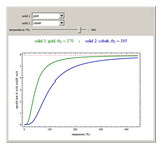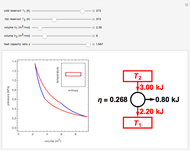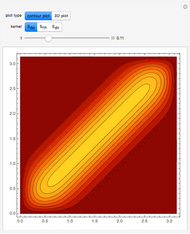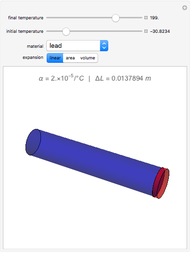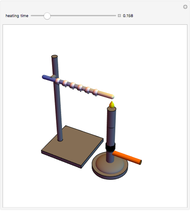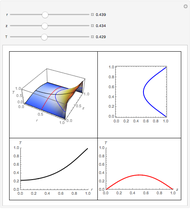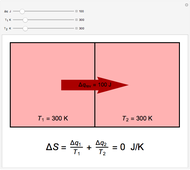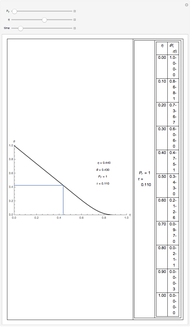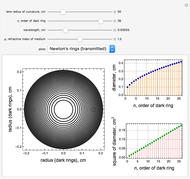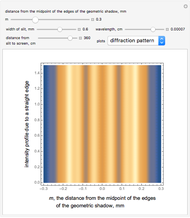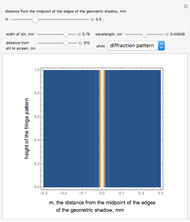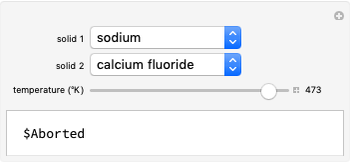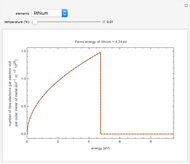Heat Capacity of Solids in the Debye Approximation

Requires a Wolfram Notebook System
Interact on desktop, mobile and cloud with the free Wolfram Player or other Wolfram Language products.
The value of the classical molar heat capacity  , depends on temperature. In the Debye approximation, it is given by
, depends on temperature. In the Debye approximation, it is given by  , where
, where  is the Debye temperature of the solid,
is the Debye temperature of the solid,  is the absolute temperature, and
is the absolute temperature, and  is the gas constant. This Demonstration shows the variation of the specific heat of solids with temperature of representative solids according to the Debye theory.
is the gas constant. This Demonstration shows the variation of the specific heat of solids with temperature of representative solids according to the Debye theory.
Contributed by: Kallol Das (St. Aloysius College, Jabalpur, India) (March 2011)
Open content licensed under CC BY-NC-SA
Snapshots
Details
The dashed red line is the value of the molar heat capacity  as given by the Dulong–Petit law. The classical theory for the specific heat of solids does not explain the decrease of specific heat at low temperatures. The physical models of the specific heat curves as given by Einstein and subsequently by Debye employed the quantum theory and agreed well with experiment.
as given by the Dulong–Petit law. The classical theory for the specific heat of solids does not explain the decrease of specific heat at low temperatures. The physical models of the specific heat curves as given by Einstein and subsequently by Debye employed the quantum theory and agreed well with experiment.
The Debye model details and the Debye temperature of solids are taken from A. J. Dekker, Solid State Physics, New Delhi: Macmillan India Limited, 2007.
Permanent Citation


